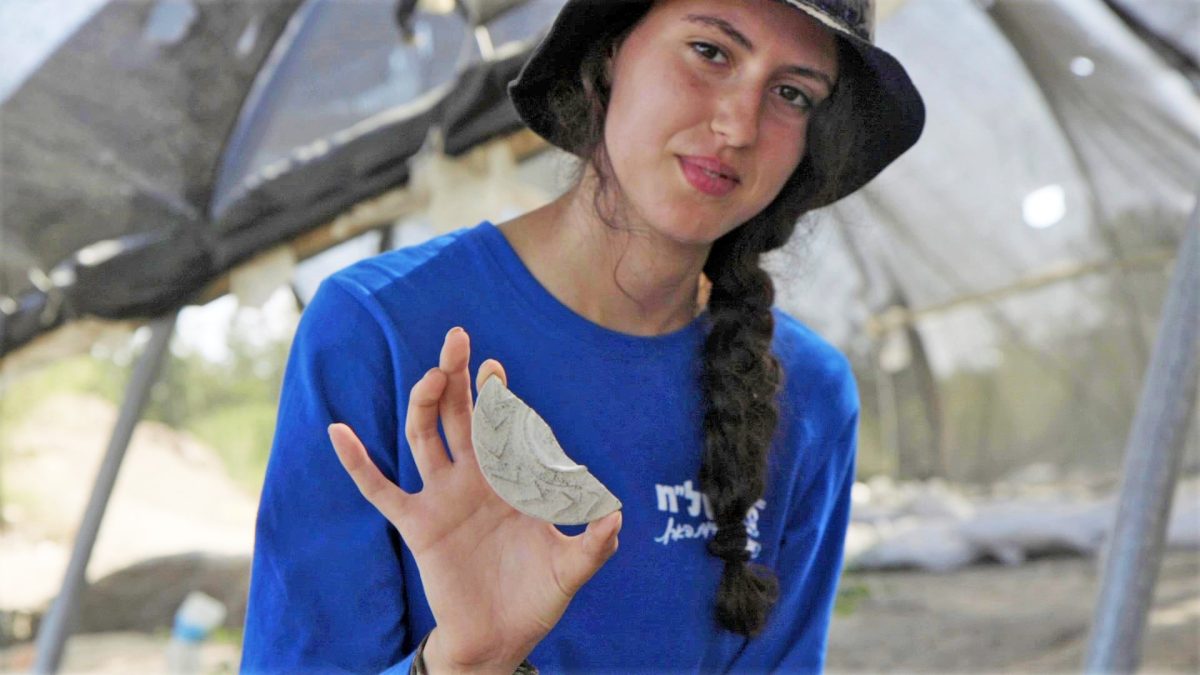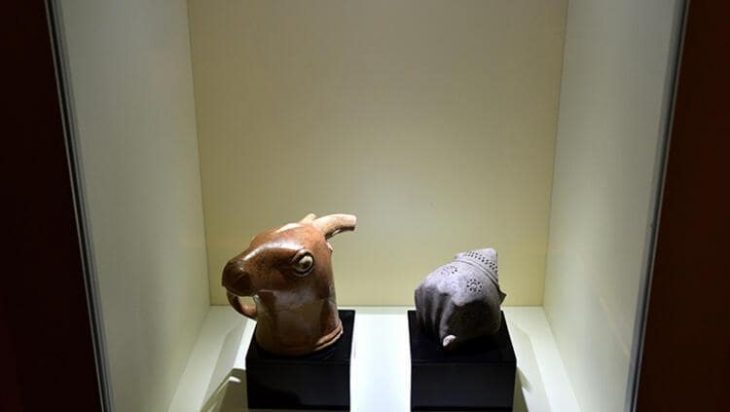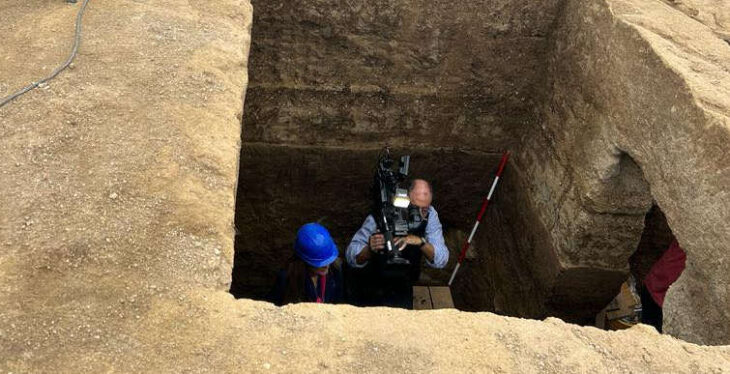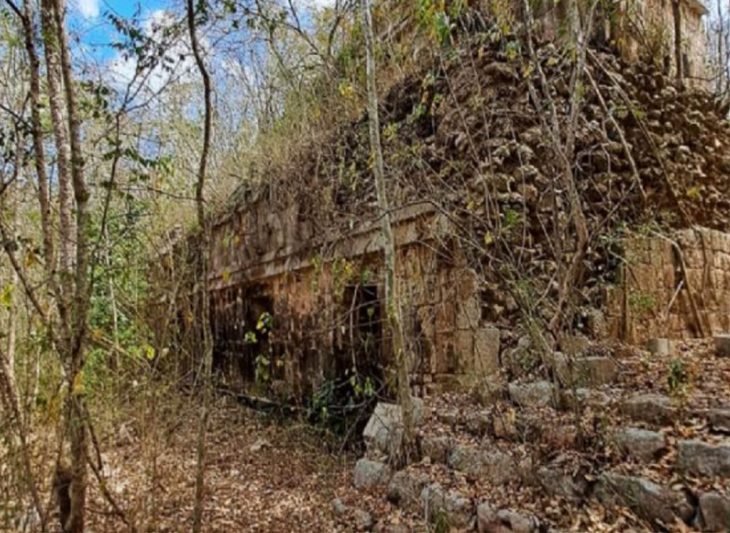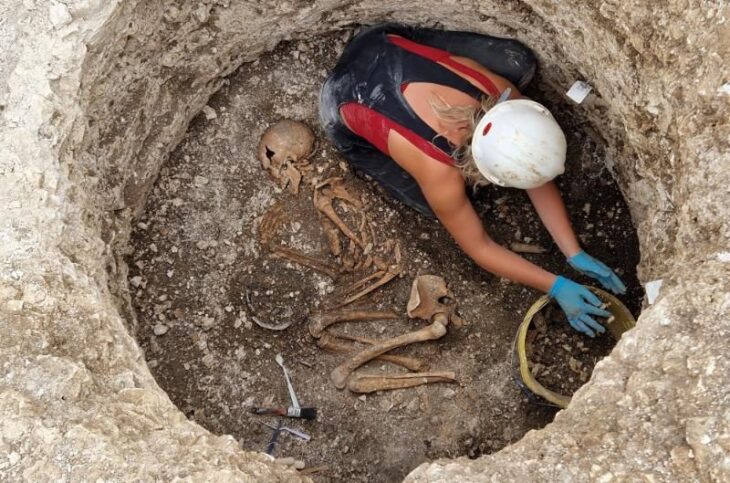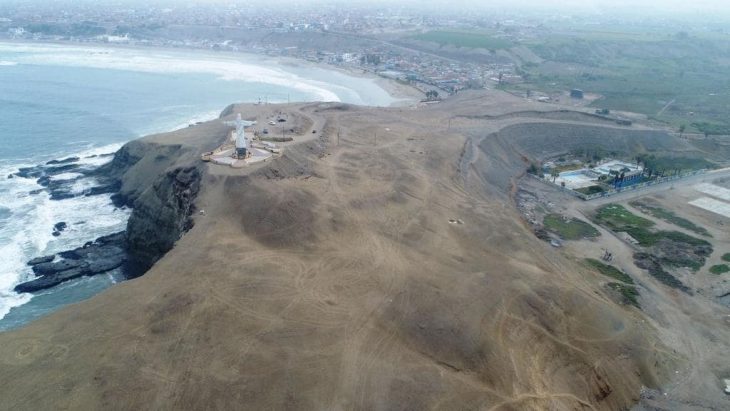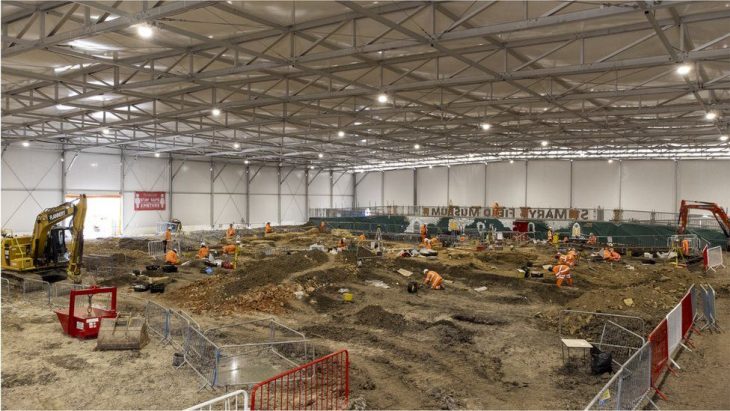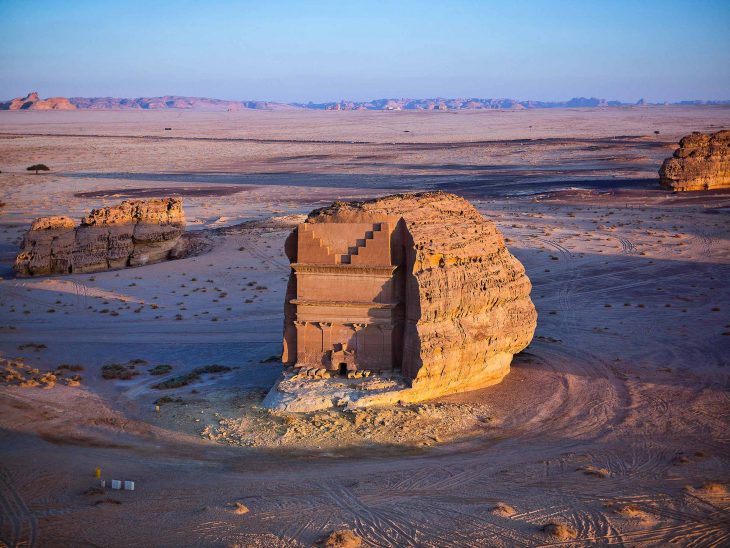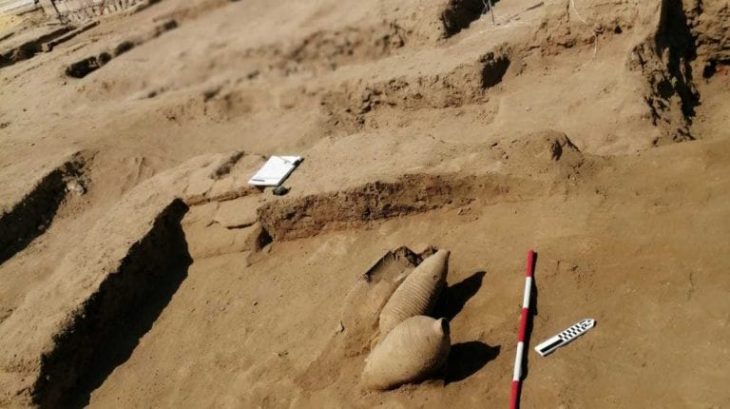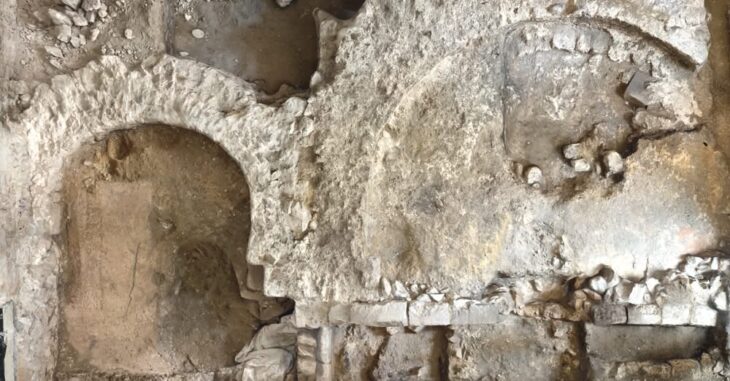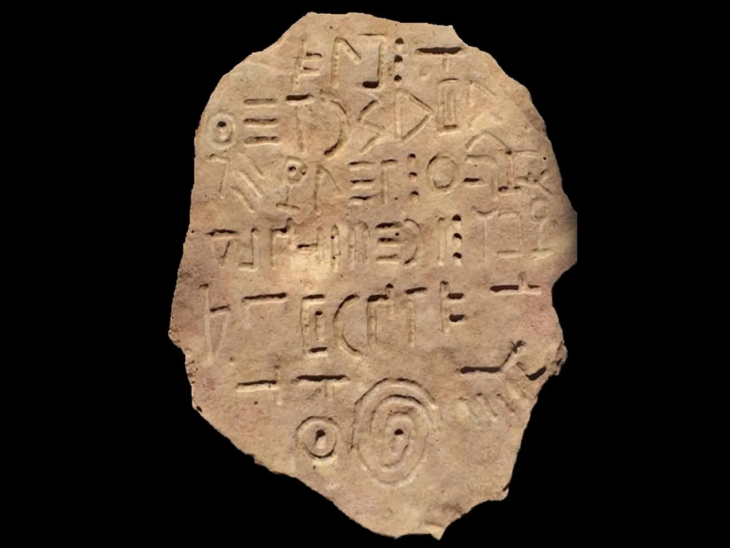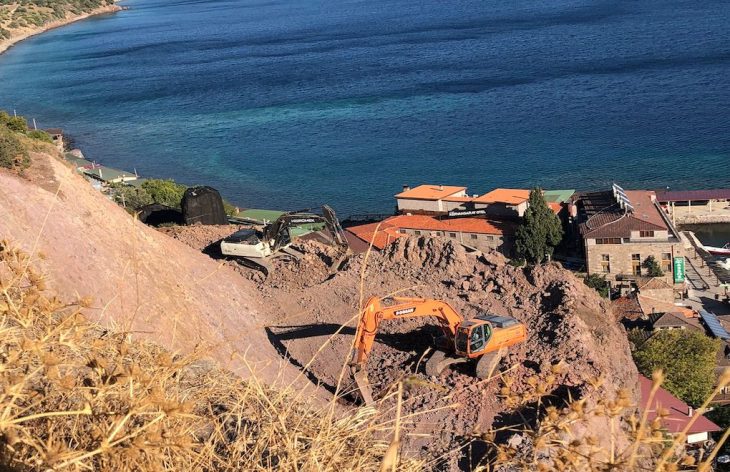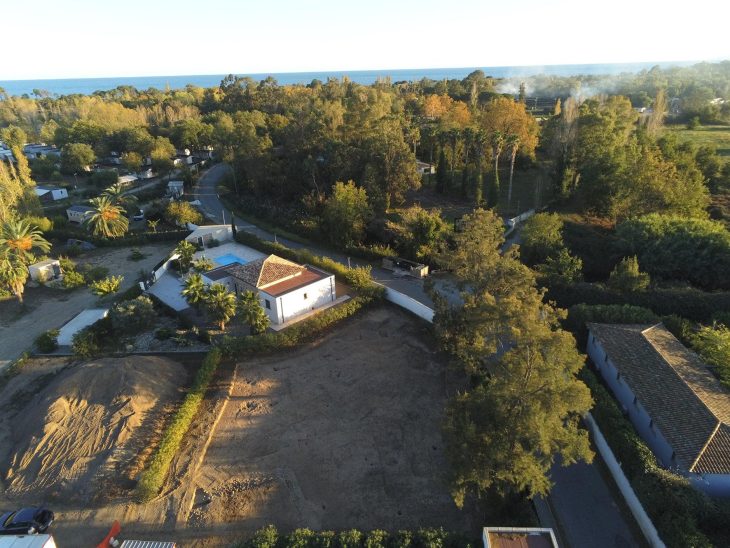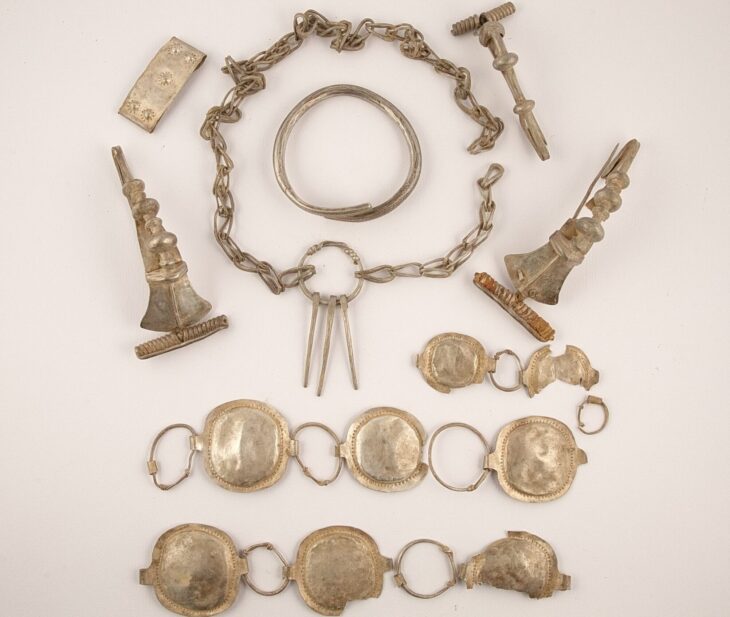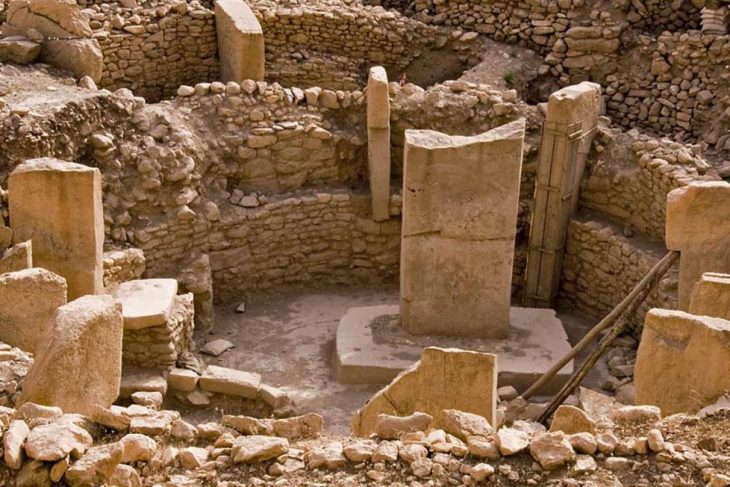A High school student discovered an ancient “magical mirror” meant to ward off the evil eye in an archaeological excavation in northern Israel.
A few days ago, seventeen-year-old Aviv Weizman from Kiryat Motskin, near Haifa, took part in an Israel Antiquities Authority archaeological excavation at the ancient site of Usha and uncovered an exceptional find from the Byzantine period—a 1,500-year-old “magical mirror.”
Usha (also known as Osha) was a jewish village in Galilee, located about 8 kilometers southwest of the city of Nazareth. Remains of the city founded by rabbis fleeing Roman persecution in Judea were recently uncovered, revealing roads, stunning mosaic floors, ritual baths and oil and wine presses.
As part of a “Survival Course” run by the Shelah branch in the Ministry of Education, 500 high-school pupils participated in archaeological excavations around the country together with the Israel Antiquities Authority.
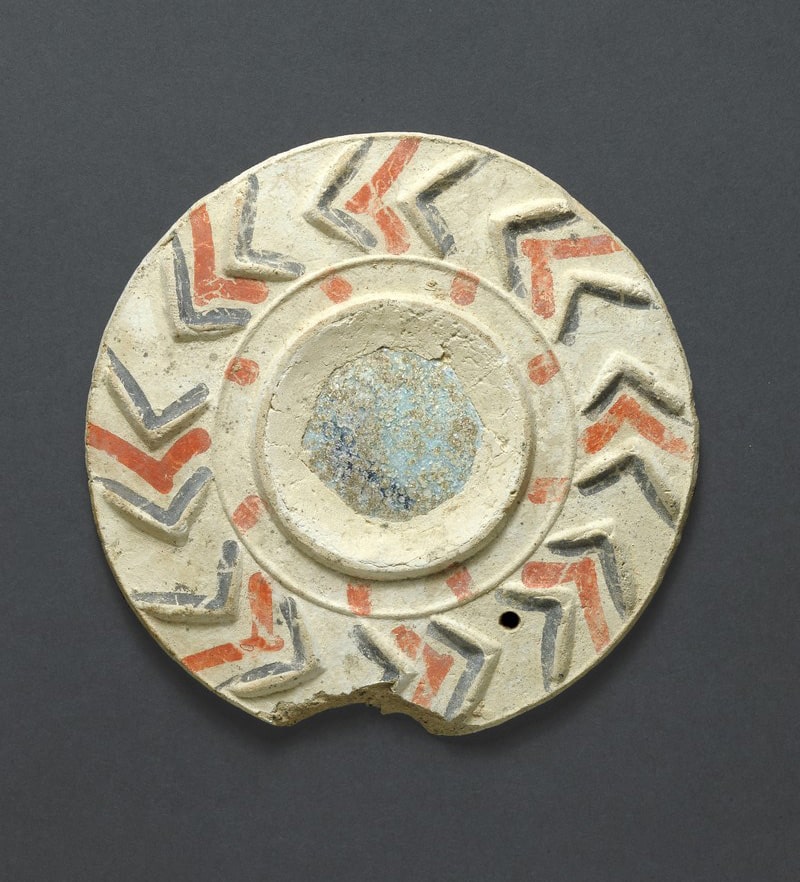
During the Survival Course, the young leaders take part in a 90-km survival trek from Mount Meron to Mount Hermon. During the trek, the youth participate in Israel Antiquities Authority archaeological excavations at sites located around the country that will be opened to the public in the future.
📣 Our WhatsApp channel is now LIVE! Stay up-to-date with the latest news and updates, just click here to follow us on WhatsApp and never miss a thing!!
One of the places where the youth dug was the site of Usha close to Kiryat Ata, directed by the Israel Antiquities Authority archaeologist Hanaa Abu Uqsa Abud. This week, the excavation produced a special find: an unusual pottery sherd that peeped out of the ground between the walls of a building. Aviv uncovered the sherd and picked it up, and showed it to Dr. Einat Ambar-Armon, Director of the Israel Antiquities Authority Northern Education Center, who recognized the find as the plaque of a magical mirror.
According to Navit Popovitch, Israel Antiquities Authority Curator of the classical Periods, “The fragment is part of a “magical mirror” from the Byzantine period, the 4th–6th centuries CE. A glass mirror, for protection against the Evil Eye was placed in the middle of the plaque: the idea was that the evil spirit, such as a demon, who looked in the mirror, would see his own reflection, and this would protect the owner of the mirror. Similar mirror plaques have been found in the past as funerary gifts in tombs, to protect the deceased in their journey to the world to come.”

